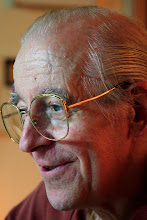After many years, in occasion of Easter (a Sunday as many others here in Korea), we decided to spend a few days in Ulsan, but just come down from the KTX (the bullet train) we have been taken by delusion and surprise: the town that we remembered was no longer there. Out of any doubt, the Hyundai (現代, 현대) cars and shipyard, the oil refinery (the largest in the world) and petrochemical plants have transformed the lovely provincial town into the jerky city, not so different from Seoul, which appeared before our eyes. Even the two landmarks of the old town, whales and petroglyphs, have lost their charm and only their memory remains today.

Ulsan, Sinbok Rotary
The people of Ulsan have practiced whaling for centuries and the drawings carved on the rock there provide with evidence of this. The Pangudae (盤龜臺, 반구대) Petroglyphs, a historic site from the late New Stone Age or early Bronze Age (c.2 000 BC) discovered in the village of Taegok (대곡리, Taegok-li), Ulsan, depict whales and whaling scenes.

The Pangudae Petroglyphs rock panel
Changsaengpo grew into a trading centre for whale meat after Tsar Nicholas II (1868-1918, r.1894-1917), the last emperor of Russia, in 1899 used the small port for his whaling fleet. Whales were so plentiful in the East Sea off Ulsan then that one foreign whaler wrote, “Whales even dared to run against our ship or sometimes we sailed on the backs of the whales.” During the Japanese occupation (1910-1945), however, Koreans were prohibited from whaling. While the Japanese hunted without restriction, it was not until April 16, 1946—after the occupation ended—that Koreans went whaling again. In those days, whale meat was not seen as a luxury but rather an alternative source of protein for those who could not afford red meat.
But the practice of whaling ended in 1986, when the International Whaling Commission adopted a moratorium on commercial whaling for the conservation of whale stocks and since only whales accidentally caught in fishing nets could be sold, the supply of whale meat has not been able to meet rising demand. Korean police have also been cracking down on illegal whaling and smuggling from abroad for more than two decades. Defenders of whaling say that the moratorium on commercial whaling has created an overabundance of whales that are now interfering with legal fishing, as whales eat too much of the sea life that the fishermen are trying to catch.
The issue is still open and in Chansaengpo only the Whale Museum remain to remember the old golden days.
 Changsaengpo Whale Museum
Changsaengpo Whale Museum
Nevertheless, whale meat is still considered a representative food of Ulsan, whose residents sometimes joke that if guests are not served whale meat when they visit, it means that they are unwelcome. Obviously, it is only a joke because during our last visit we was not served whale meet by Myo-hwa relatives!
The relationship between Ulsan and whales dates back to pre-historic times. The Pangudae Petroglyphs, discovered along the Taegok Stream (대곡천, Taegokchon), a tributary of the Taehwa River (太和江, 태화강, Taehwagang) in Ulsan in the winter of 1971, provides historical evidence of such whaling practices. Designated as Korean National Treasure No. 285, the 296 rock engravings (of which 270 depicting various animals, including turtles, tigers and wild boars) are thought to have been carved about 4 000 years ago. Fifty-eight of the carvings depict various whales, such as grey whales and whaling scenes, including people on their boat, with large fishing nets, spears and shields. A carving shows one whaling vessel used to hunt grey and sperm whales, a proof that whaling was done by Korean people in prehistoric times. The carvings detail precise observations of whales' behaviour and 10 species of whales migrating through the sea near Ulsan can be identified.
 A tracing of the complete Pangudae rock panel
A tracing of the complete Pangudae rock panel
The Pangudae area is known for its tranquillity and natural beauty all year around. However, the rock on which the petroglyphs are carved is now periodically flooded for many months a year. The summer rains are welcome in some respects as they fill the nearby Sayon Lake (사연호, Sayonho), an artificial lake built to supply water to the nearby Ulsan, but this benefit comes at the cost of submerging the remarkable prehistoric artwork below water.

These prehistoric people who left for us the Pangudae Petroglyphs are now recognized as possessing outstanding technical abilities and a complex culture. This invaluable source of prehistoric information is not only a precious cultural heritage, but is also notable for the valuable information it contains about ancient Korea and about the history of the whaling in Ulsan. In particular, the carvings demonstrates that life has not changed all that much over time, as whale hunting was a thriving business in Ulsan up until the late 1980s.
Another speedy KTX trip back to Seoul with the sad memory of a sleepy town now disappeared to let space to another without identity.
Photos by Giorgio Olivotto and Myo-hwa Chong
Seoul, Korea
May 8, 2011

Nessun commento:
Posta un commento